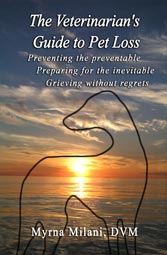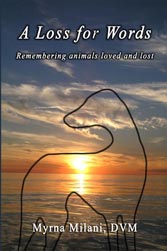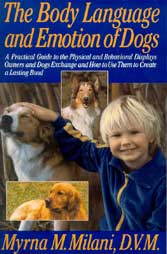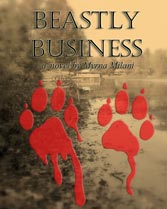Consider it a(nother) sign of advancing years that I can remember how we kids used to share secretive sly looks when the minister or Sunday School teacher talked about some Biblical hero girding his loins for battle. We had no idea what it meant, but felt convinced that anything dealing with loins had to be something our parents wouldn’t want us to know. When we later learned that it referred to hitching up one’s robes with a belt so one didn’t trip over them, all the fun went out of those stories. Sad to say, our awareness of any Greater Lesson they conveyed probably went with it.
Still, I feel I must gird my loins to tackle the subject of this commentary: shameless self-promotion. In the past few months, I have published one nonfiction book and one collection of writings in ebook and print-on-demand formats. Additionally two previous books have been released in Kindle editions by their publisher, and another publisher has made my first mystery available in iBook and Barnes and Nobles’ Nook formats.
I realize that vigorously tooting of one’s own horn is now expected in our society. But this isn’t a convention that comes easily to me. As a child, I was taught that doing so signified one’s lack of manners and good upbringing. Throughout my education, teachers at all levels reinforced this message, adding other adjectives like “egotistical” and “narcissistic” to the list of negative qualities revealed by such behavior. During my four years in veterinary school, the faculty used self-promotion as a prime example of unprofessionalism. A hot topic among my colleagues when I moved to New Hampshire was how hard the ethics board would come down on the veterinarian who sank so low as to have his clinic’s name printed in bold type in the Yellow Pages. Such flagrant self-promotion!
But that was then and this is now. Now self-promotion is the name of the game and those who resist are considered inferior and so old-fashioned or even (and totally incomprehensible to me) that they don’t care about their accomplishments. But because I do care about my work and believe it has merit, I’ve girded my loins and, with advanced apologies to my parents, teachers, and all others who taught me otherwise, take the plunge.
 The first book, The Veterinarian’s Guide to Pet Loss is an updated look at material I first wrote about in the late nineties. The book’s subtitle sums up its purpose: Preventing the preventable, preparing for the inevitable, and grieving without regret. Although the book covers much of the same ground as its predecessor, our society has changed a great deal since those optimistic days more than two decades ago. Since 9/11 we have become a more frightened and paranoid society as well as a lonelier one. Because of that, our relationships with our companion animals also have changed. We now need them more than ever.
The first book, The Veterinarian’s Guide to Pet Loss is an updated look at material I first wrote about in the late nineties. The book’s subtitle sums up its purpose: Preventing the preventable, preparing for the inevitable, and grieving without regret. Although the book covers much of the same ground as its predecessor, our society has changed a great deal since those optimistic days more than two decades ago. Since 9/11 we have become a more frightened and paranoid society as well as a lonelier one. Because of that, our relationships with our companion animals also have changed. We now need them more than ever.
Back in the nineties the idea of a pet loss book that considered losses from causes other than death just didn’t compute in the publishing and public psyche. What little marketing and promotion that was done (back when publishers still did such things), positioned the book with those dealing with loss strictly by death, and then almost inevitably after-the-fact. Even the title and subtitle of the book were changed so it better fit into that established marketing niche.
But the value of prevention over after-the-fact treatment forms the core of my professional philosophy regarding animal health, behavior, and the human-animal bond. The more we do when our animals are alive to ensure we don’t lose them to avoidable health, behavioral, and/or bond problems, the fewer regrets we’ll experience when they die. When we do our best to prevent the preventable, we can grieve for the loss of a companion with whom we shared a fulfilling life instead of being tortured by feelings of guilt and regret for things we should have done but didn’t.
The Veterinarian’s Guide to Pet Loss also enabled me to include information that was considered too suggestive for the average companion animal owner to handle in the late nineties. Unlike my novel, Beastly Business (more on it later) which truly does deal with an aspect of the human-companion animal bond some might find troubling, the omitted material in the original pet loss book simply discussed the sensory loss that accompanies the loss of a beloved animal companion. I’d included it because conversations with clients and friends convinced me that the belief that these quite normal experiences were somehow wrong unnecessarily hampered the grieving and healing process. Alas my then-editor was among those who believed there truly was something wrong with people who missed the touch and feel of their animals. Maybe that person was right, but I like to give my readers more credit than that.
 The second book, A Loss for Words: Remembrances of animals loved and lost is a collection of essays and stories I wrote about pet loss under a variety of circumstances, some true, some fiction. I put this together at the request of a friend during a discussion about the grieving and healing process. While I certainly hope readers find comfort in the collection, I also hope it inspires them to write such essays about their own animals lost under any circumstances. From personal experience I know how helpful this can be. Including remembrances in a real-life or virtual memorial gives us the opportunity to put our thoughts and emotions into words. It enables us to put order into the emotional chaos that otherwise may seem overwhelming. It enables us to express feelings we might otherwise never express.
The second book, A Loss for Words: Remembrances of animals loved and lost is a collection of essays and stories I wrote about pet loss under a variety of circumstances, some true, some fiction. I put this together at the request of a friend during a discussion about the grieving and healing process. While I certainly hope readers find comfort in the collection, I also hope it inspires them to write such essays about their own animals lost under any circumstances. From personal experience I know how helpful this can be. Including remembrances in a real-life or virtual memorial gives us the opportunity to put our thoughts and emotions into words. It enables us to put order into the emotional chaos that otherwise may seem overwhelming. It enables us to express feelings we might otherwise never express.
 HarperCollins has released The Body Language and Emotion of Dogs and The Body Language and Emotion of Cats in Kindle editions.
HarperCollins has released The Body Language and Emotion of Dogs and The Body Language and Emotion of Cats in Kindle editions.
Sadly the publisher had no interest in updating the material so it will appear in its original form. Readers familiar with the commentaries and blog on this website will recognize how much more we know about animal cognition, ethology, and the not always positive effects of spay and neuter than we did when I wrote those books. The make-up of the canine and feline populations also has changed. Today I can’t imagine writing such a book without discussing how dogs from street backgrounds—be they foreign or domestic—differ in behavior from those of companion animal breeding. Ditto for puppies and kittens denied quality maternal care and relieved of their reproductive organs while still babies.
 Nor can I imagine referring to animals instead of behaviors as dominant or submissive, let alone providing a list of behaviors that would define this label. Now we know that behaviors don’t necessarily define rank, and displays that signal one message in one context may communicate the opposite in another. All of which is my way of saying that the absolutes that seemed so absolute back then now seem incredibly naïve.
Nor can I imagine referring to animals instead of behaviors as dominant or submissive, let alone providing a list of behaviors that would define this label. Now we know that behaviors don’t necessarily define rank, and displays that signal one message in one context may communicate the opposite in another. All of which is my way of saying that the absolutes that seemed so absolute back then now seem incredibly naïve.
For me and I hope readers, the body language books serve as behavioral/bond time machines. When reading them, we can appreciate what concepts have stood the test of time and which ones have fallen by the wayside. If you’re more electronically adept than I am, you can even make comments regarding your own observations in the new editions.
 The last book to hit the market in these last few months is the first in my series of behavioral/bond mysteries, Beastly Business. It’s now available as an iBook and also in a Barnes and Noble Nook edition. You also may download a free audio version that yours truly recorded here. I have a special place in my heart for this book and all my fiction because it enables me to explore the human-animal bond and animal behavior in a manner I can’t in nonfiction.
The last book to hit the market in these last few months is the first in my series of behavioral/bond mysteries, Beastly Business. It’s now available as an iBook and also in a Barnes and Noble Nook edition. You also may download a free audio version that yours truly recorded here. I have a special place in my heart for this book and all my fiction because it enables me to explore the human-animal bond and animal behavior in a manner I can’t in nonfiction.
What has remained essentially unchanged in books past and present is my belief in the power and elasticity of the human-animal bond. Years ago I decided that relative to the survival of this planet, the human-animal bond is comparable to the force of gravity. Combined with the bond to plants and the resulting biophilia (to use E. O. Wilson’s terminology), it might even exceed it. We can muck about with the bond, pretend it doesn’t exist, romanticize or otherwise try to reshape it to suit our own purposes. But in the end we inevitably discover that it, too, and like most really important things isn’t about us. It’s about all that is. It also fulfills a pledge I made to myself to get the message of the bond out in as many forms as possible in hopes that some may take root. The only one left is film, but you never know…
Consider it a(nother) sign of advancing years that I can remember how we kids used to share secretive sly looks when the minister or Sunday School teacher talked about some Biblical hero girding his loins for battle. We had no idea what it meant, but felt convinced that anything dealing with loins had to be something our parents wouldn’t want us to know. When we later learned that it referred to hitching up one’s robes with a belt so one didn’t trip over them, all the fun went out of those stories. Sad to say, our awareness of any Greater Lesson they conveyed probably went with it.
Still, I feel I must gird my loins to tackle the subject of this commentary: shameless self-promotion. In the past few months, I have published one nonfiction book and one collection of writings in ebook and print-on-demand formats. Additionally two previous books have been released in Kindle editions by their publisher, and another publisher has made my first mystery available in iBook and Barnes and Nobles’ Nook formats.
I realize that vigorously tooting of one’s own horn is now expected in our society. But this isn’t a convention that comes easily to me. As a child, I was taught that doing so signified one’s lack of manners and good upbringing. Throughout my education, teachers at all levels reinforced this message, adding other adjectives like “egotistical” and “narcissistic” to the list of negative qualities revealed by such behavior. During my four years in veterinary school, the faculty used self-promotion as a prime example of unprofessionalism. A hot topic among my colleagues when I moved to New Hampshire was how hard the ethics board would come down on the veterinarian who sank so low as to have his clinic’s name printed in bold type in the Yellow Pages. Such flagrant self-promotion!
But that was then and this is now. Now self-promotion is the name of the game and those who resist are considered inferior and so old-fashioned or even (and totally incomprehensible to me) that they don’t care about their accomplishments. But because I do care about my work and believe it has merit, I’ve girded my loins and, with advanced apologies to my parents, teachers, and all others who taught me otherwise, take the plunge.
Back in the nineties the idea of a pet loss book that considered losses from causes other than death just didn’t compute in the publishing and public psyche. What little marketing and promotion that was done (back when publishers still did such things), positioned the book with those dealing with loss strictly by death, and then almost inevitably after-the-fact. Even the title and subtitle of the book were changed so it better fit into that established marketing niche.
But the value of prevention over after-the-fact treatment forms the core of my professional philosophy regarding animal health, behavior, and the human-animal bond. The more we do when our animals are alive to ensure we don’t lose them to avoidable health, behavioral, and/or bond problems, the fewer regrets we’ll experience when they die. When we do our best to prevent the preventable, we can grieve for the loss of a companion with whom we shared a fulfilling life instead of being tortured by feelings of guilt and regret for things we should have done but didn’t.
The Veterinarian’s Guide to Pet Loss also enabled me to include information that was considered too suggestive for the average companion animal owner to handle in the late nineties. Unlike my novel, Beastly Business (more on it later) which truly does deal with an aspect of the human-companion animal bond some might find troubling, the omitted material in the original pet loss book simply discussed the sensory loss that accompanies the loss of a beloved animal companion. I’d included it because conversations with clients and friends convinced me that the belief that these quite normal experiences were somehow wrong unnecessarily hampered the grieving and healing process. Alas my then-editor was among those who believed there truly was something wrong with people who missed the touch and feel of their animals. Maybe that person was right, but I like to give my readers more credit than that.
Sadly the publisher had no interest in updating the material so it will appear in its original form. Readers familiar with the commentaries and blog on this website will recognize how much more we know about animal cognition, ethology, and the not always positive effects of spay and neuter than we did when I wrote those books. The make-up of the canine and feline populations also has changed. Today I can’t imagine writing such a book without discussing how dogs from street backgrounds—be they foreign or domestic—differ in behavior from those of companion animal breeding. Ditto for puppies and kittens denied quality maternal care and relieved of their reproductive organs while still babies.
For me and I hope readers, the body language books serve as behavioral/bond time machines. When reading them, we can appreciate what concepts have stood the test of time and which ones have fallen by the wayside. If you’re more electronically adept than I am, you can even make comments regarding your own observations in the new editions.
What has remained essentially unchanged in books past and present is my belief in the power and elasticity of the human-animal bond. Years ago I decided that relative to the survival of this planet, the human-animal bond is comparable to the force of gravity. Combined with the bond to plants and the resulting biophilia (to use E. O. Wilson’s terminology), it might even exceed it. We can muck about with the bond, pretend it doesn’t exist, romanticize or otherwise try to reshape it to suit our own purposes. But in the end we inevitably discover that it, too, and like most really important things isn’t about us. It’s about all that is. It also fulfills a pledge I made to myself to get the message of the bond out in as many forms as possible in hopes that some may take root. The only one left is film, but you never know…